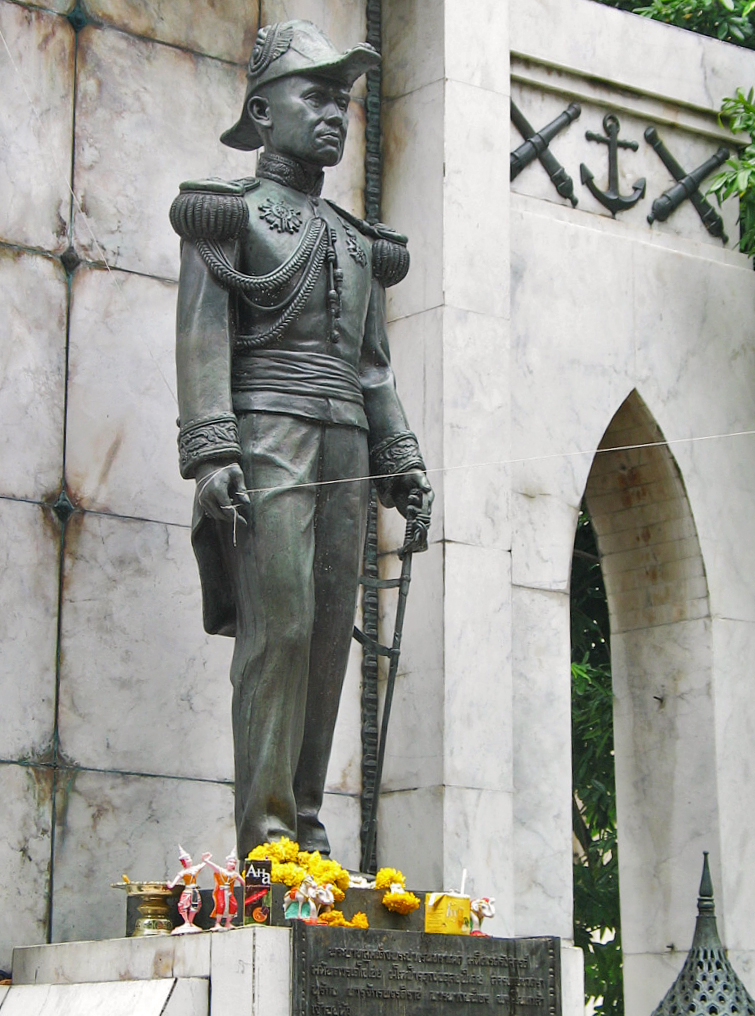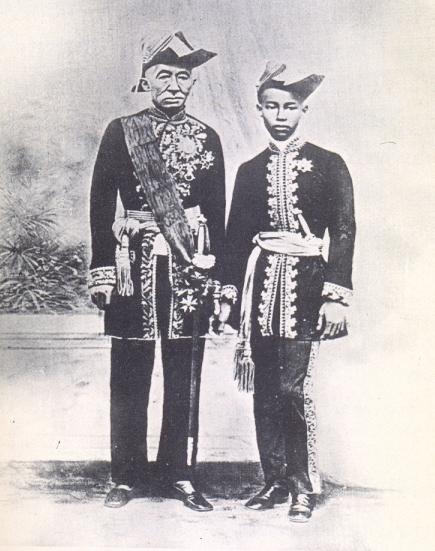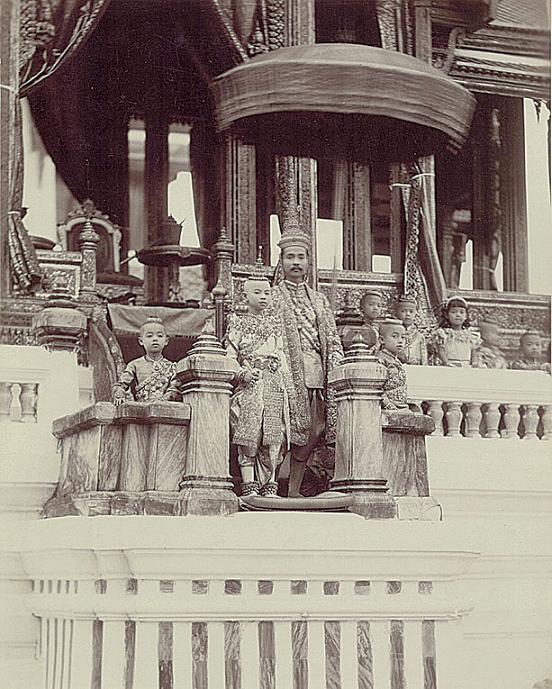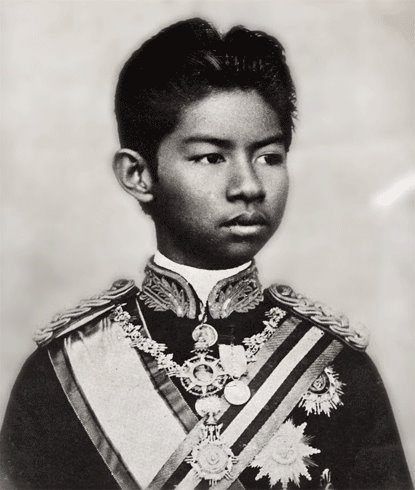|
Wichaichan
Wichaichan () (6 April 1838 – 28 August 1885) was a Siamese prince and member of the Chakri dynasty. He was the eldest son of Viceroy Pinklao and Princess Aim, and thus nephew to King Mongkut (Rama IV). Wichaichan succeeded his father by being appointed the Front Palace and ''Viceroy of Siam'' in 1868, during the reign of his cousin King Chulalongkorn (Rama V).Kesboonchoo Mead P.38 During his tenure the office of Front Palace was extremely powerful and rivalled that of the monarch's own. Inevitably the two forces clashed in the Front Palace crisis. Wichaichan was defeated and the power of the Front Palace was greatly diminished. After his death in 1885, the last vestiges of the title were abolished in favour of a crown prince.Kesboonchoo Mead P.95 Notably, he is the only Front Palace that was elected by the council, not appointed by the king in accordance with the royal tradition, which is still considered as controversial and unorthodox practice to this day. Early life ... [...More Info...] [...Related Items...] OR: [Wikipedia] [Google] [Baidu] |
Rattanakosin Kingdom (1782–1932)
The Rattanakosin Kingdom, also known as the Kingdom of Siam after 1855, refers to the Siamese kingdom between 1782 and 1932. It was founded in 1782 with the History of Bangkok#Rattanakosin, establishment of Rattanakosin (Bangkok), which replaced the city of Thonburi Kingdom, Thonburi as the capital of Siam. This article covers the period until the Siamese revolution of 1932. The kingdom governed based on the Mandala (political model), mandala system. This allows for high-autonomy locally with the kingdom influencing and effectively rule its area of suzerainty. At its zenith in 1805-1812, the Kingdom was composed of Administrative divisions of Thailand#Muang Prathetsarat, 25 polities, ranging from duchies and principalities to federations and kingdoms. With the furthest extent reaching Shan States, the Shan States, southern Xishuangbanna Dai Autonomous Prefecture, Yunnan, Laos, Cambodia, northern Si Rat Malai, Malaysia, Sip Song Chau Tai, northwestern Vietnam, and Kawthaung, K ... [...More Info...] [...Related Items...] OR: [Wikipedia] [Google] [Baidu] |
Chakri Dynasty
The Chakri dynasty is the current reigning dynasty of the Thailand, Kingdom of Thailand. The head of the house is the Monarchy of Thailand, king, who is head of state. The family has ruled Thailand since the founding of the Rattanakosin era and the city of Bangkok in 1782; following the end of Taksin's reign, when the capital of Siam shifted to Bangkok. The royal house was founded by Rama I, an Ayutthaya Kingdom, Ayutthaya military leader of Thai Chinese, Sino-Mon people, Mon descent. Prior to his accession to the throne, Rama I held for years the title Chakri (noble title), Chakri, the civil chancellor. In founding the dynasty, the king himself chose "''Chakri''" as the name for it. The emblem of the house is composed of the discus (Sudarshana Chakra, Chakra) and the trident (Trishula), the celestial weapons of the gods Vishnu and Shiva, of whom the Thai sovereign is seen as an incarnation. The current head of the house is Vajiralongkorn who was proclaimed king on 1 December 2 ... [...More Info...] [...Related Items...] OR: [Wikipedia] [Google] [Baidu] |
Front Palace
Krom Phra Ratchawang Bowon Sathan Mongkhon , colloquially known as the Front Palace (, ), was the title of the ''uparaja'' of Siam, variously translated as "viceroy", "vice king" or "Lord/Prince of the Front Palace", as the titleholder resided in the physical residence of the same name. The office of Front Palace was considered second only to the king and regarded as the heir presumptive. The name, with its dual meaning, originated in the Ayutthaya period, and the holder later gained significant powers during the Rattanakosin period. Front Palace occupants were usually a son or brother of the reigning monarch. The office existed until the death of the last occupant, Prince Wichaichan, in 1885. King Chulalongkorn then abolished the office of an heir presumptive, introducing in its stead the Western concept of a crown prince as heir apparent, and styled the new office "Crown Prince of Thailand, Crown Prince of Siam". Ayutthaya period The ''Uparaja'' or ''Uparat'' concept of a Vice ... [...More Info...] [...Related Items...] OR: [Wikipedia] [Google] [Baidu] |
Pinklao
Pinklao (; 4 September 1808 – 7 January 1866) was the viceroy of Siam. He was the younger brother of Mongkut, King Rama IV, who crowned him as a monarch with equal honor to himself. Early life Prince Chutamani was born on 4 September 1808, as a son of Prince Itsarasunthon and Princess Bunrot at the Phra Racha Wang Derm or Thonburi Palace. Prince Chutamani also had an elder brother—Prince Mongkut—who was seven years older. In 1809, Prince Itsarasunthon was crowned as Rama II and his mother became Queen Sri Suriyendra. They all moved to the Grand Palace. The government of Rama II, however, was dominated by ''Kromma Meun'' Chetsadabodin, his son with Sri Sulalai. In 1824, Mongkut became a monk according to Thai traditions. However, Rama II fell ill and died in the same year. The nobility, led by ''Chao Phraya'' Abhay Pudhorn, the Prime Minister, and Prayurawongse, the Minister of Foreign Affairs, supported Chetsadabodin for the throne as he proved competent to rule. Chetsa ... [...More Info...] [...Related Items...] OR: [Wikipedia] [Google] [Baidu] |
Chulalongkorn
Chulalongkorn (20 September 1853 – 23 October 1910), posthumously honoured as King Chulalongkorn the Great, was the fifth king of Siam from the Chakri dynasty, titled Rama V. Chulalongkorn's reign from 1868 until his death in 1910 was characterised by the modernisation of Siam, governmental and social reforms, and territorial concessions to the British and French empires. As Siam was surrounded by European colonies, Chulalongkorn, through his policies and acts, ensured the independence of Siam. Chulalongkorn was born as the son of Mongkut, the fourth king of Siam. In 1868, he travelled with his father and Westerners invited by Mongkut to observe the solar eclipse of 18 August 1868 in Prachuap Khiri Khan Province. However, Chulalongkorn and his father both contracted malaria which resulted in his father's death. The 1893 Franco-Siamese crisis and Haw wars took place during his reign. All his reforms were dedicated to ensuring Siam's independence given the increasing ... [...More Info...] [...Related Items...] OR: [Wikipedia] [Google] [Baidu] |
Sri Suriwongse
Somdet Chaophraya Borom Maha Sri Suriwongse (, , ; also spelled ''Suriyawong'', etc.; 23 December 1808 – 19 January 1883), whose personal name was Chuang Bunnag (; ; ), was a prominent 19th century Thai figure who served as the regent during the early years of the reign of King Chulalongkorn. Biography Chuang Bunnag () was born on 23 December 1808 to Tish Bunnag and his main wife Lady Chan, who was a daughter of ''Chao Phraya'' Pollathep Thongin, at Chuang's grandfather's residence off the southern wall of the Grand Palace near modern Wat Pho, Phra Nakhon District. Chuang was a member of Bunnag family who had descended from Sheikh Ahmad, the Persian minister of King Prasat Thong. (His lineage had converted to Theravada Buddhism in the mid-eighteenth century.) In 1818, the Grand Palace expanded south and Bunnags moved to their new residence on the West bank of Chao Phraya River in modern Thonburi District. Chuang's father, Tish, was later invested as ''Chao Phraya'' Phrakl ... [...More Info...] [...Related Items...] OR: [Wikipedia] [Google] [Baidu] |
Vajirunhis
Maha Vajirunhis, Crown Prince of Siam (; ; 27 June 1878 – 4 January 1895) was the first Crown Prince of the Chakri dynasty. He was the first son of King Chulalongkorn and Queen Savang Vadhana together, who were half-siblings. The King built a palace for the Prince, nicknamed Windsor Palace. The European-style palace was demolished after his death. The site is now occupied by the National Stadium of Thailand. Heir apparent In 1886, after the death of the last Vice King Bovorn Vichaichan, King Chulalongkorn chose not to appoint one of his brothers as a new Vice King, but instead appointed his eldest son as the Crown Prince of Siam. On 14 January 1886, he was officially introduced to his position with the title of ''Sayam Makutrajakuman'', or Crown Prince of Siam. From this appointment Sir Ernest Mason Satow, the British ambassador to Thailand, brought a telegraph of congratulations from Queen Victoria of the United Kingdom. Private interests Prince Vajirunhis was interes ... [...More Info...] [...Related Items...] OR: [Wikipedia] [Google] [Baidu] |
Crown Prince Of Thailand
The Crown Prince of Thailand (or Siam; ; ; lit. the royal son of Siam) is a title held by the heir apparent to the Monarchy of Thailand, Thai throne. It was created by King Chulalongkorn (Rama V) in 1886, for his son Prince Vajirunhis, Maha Vajirunhis, the king's eldest son by a royal wife Queen Savang Vadhana. Prior to this, the Siamese throne did not have a law or formal system regulating royal succession. In 1688, King Phetracha of Ayutthaya Kingdom, Ayutthaya created the title of Front Palace, which by the Rattanakosin Kingdom, Rattanakosin period had become the main title granted to the heir presumptive to the throne. However, few Front Palaces succeeded to the throne this way, with the exception of King Rama II, Phutthaloetla Naphalai (Rama II) in 1809. After the death of Wichaichan, Bowon Wichaichan in 1885, the title of Front Palace was abolished and replaced with the title of Crown Prince, who became heir apparent to the throne. In 1924, King Vajiravudh (Rama VI) promul ... [...More Info...] [...Related Items...] OR: [Wikipedia] [Google] [Baidu] |
Bidyalongkorn
Prince Rajani Chamcharas, the Prince Bidyalongkorn (; ; 10 January 1876 – 23 July 1945) The complete title is His Royal Highness Prince Rajani Chamcharas. He was a prince of Thailand and a member of the Thai royal family, the 22nd child of Prince Wichaichan, the Viceroy of Siam during the reign of Rama V and the second of Khun Chom Manda Liam, He is one of the grandsons of King Pinklao. His many descendants use the royal surname ''Rajani'' (; ). He was born in the Front Palace, Bangkok, and from 1886 to 1891 attended the recently founded Suankularb Wittayalai School. From 1896 to 1933 he served in a variety of governmental offices and royal advisory roles, including the Ministry of Finance, the Royal Mint, the Department of Inspection, the Department of Records, the Privy Council, the Department of Statistics and Prediction, the Department of Commerce, and the Royal Academy. The ''Historical Dictionary of Thailand'' notes: Tai linguist William J. Gedney called him "proba ... [...More Info...] [...Related Items...] OR: [Wikipedia] [Google] [Baidu] |
Thai Royal Ranks And Titles
The precedence of Thai royalty follows a system of ranks known as ''thanandon'' (), which are accompanied by royal titles. The Sovereign There are two styles which can be used for a king in ordinary speech, depending on whether he has been crowned: *Crowned kings: ''Phra Bat Somdet Phra Chao Yu Hua'' ( เจ้า; ) is the style used in ordinary speech when referring to the kings of Thailand after their coronation. This style may be used in two ways: **Preceding the name of the king; e.g., ''Phra Bat Somdet Phra Chao Yu Hua Phumiphon Adunyadet'' (; His Majesty King Bhumibol Adulyadej). **More formally it can be split across the name, possibly with the omission (or modification) of the words ''"Phra Chao Yu Hua"''; e.g., ''Phra Bat Somdet Phra Paramintara Maha Phumiphon Adunyadet'' () and ''Phra Bat Somdet Phra Paramindara Maha Prajadhipok Phra Pokklao Chao Yu Hua'' (). *Uncrowned kings: ''Somdet Phra Chao Yu Hua'' (), normally preceding the king's name, is restricted to a king ... [...More Info...] [...Related Items...] OR: [Wikipedia] [Google] [Baidu] |
Thomas George Knox
Sir Thomas George Knox KCMG (11 January 1824 – 29 July 1887) was an Ulster-Scots soldier and a diplomat, serving as consul-general in Siam from 1868 to 1879. Early life Knox was the second but eldest surviving son of Rev. James Spencer Knox, D.D. (1789–1862), rector of Maghera, County Londonderry, and his wife, Clara, daughter of the Right Hon. John Beresford. He was born in 1824 at Northland House, Dungannon, the seat of his great-grandfather Thomas Knox, 1st Viscount Northland (1729–1818). His uncles and was grandson of William Knox, bishop of Derry (1762–1831). His uncles were Thomas Knox, 1st Earl of Ranfurly (1754–1840); George Knox (1765–1827), MP for Dublin University; Charles Knox (1770–1825), Archdeacon of Armagh; and Edmund Knox (1772–1849), Bishop of Limerick. Career On 17 April 1840, Knox was appointed ensign of the 65th Foot and, on 7 October 1842, was promoted to a lieutenancy in the 98th Foot. After serving with the 98th Foot in China a ... [...More Info...] [...Related Items...] OR: [Wikipedia] [Google] [Baidu] |
Heir Presumptive
An heir presumptive is the person entitled to inherit a throne, peerage, or other hereditary honour, but whose position can be displaced by the birth of a person with a better claim to the position in question. This is in contrast to an heir apparent, whose claim on the position cannot be displaced in this manner. Overview Depending on the rules of the monarchy, the heir presumptive might be the daughter of a monarch if males take preference over females and the monarch has no sons, or the senior member of a collateral line if the monarch is childless or the monarch's direct descendants cannot inherit either because #they are daughters and females are completely barred from inheriting #the monarch's children are illegitimate, or #some other legal disqualification, such as ##being descended from the monarch through a morganatic line or ##the descendant's refusal or inability to adopt a religion the monarch is required to profess. The subsequent birth of a legitimate child t ... [...More Info...] [...Related Items...] OR: [Wikipedia] [Google] [Baidu] |






